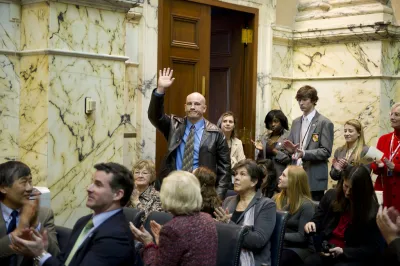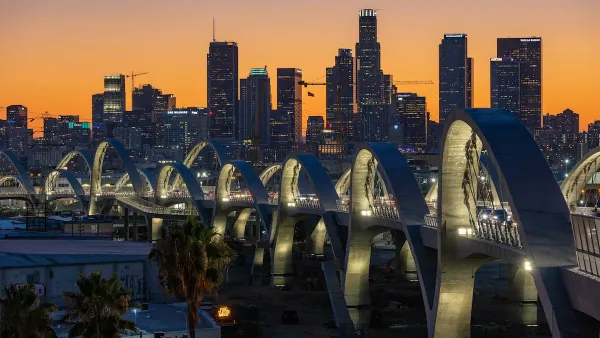Do you remember exactly when you wanted to become an urban planner? Neither do I.

For those considering a career in urban planning, don’t wait for lightning to strike, suddenly sending you down the non-motorized path toward urban planning. Waiting for this moment only delays the most effective way to know if the planning shoe fits: Just try it.
One reason it is important not to wait on planning is that by the time most of us learn about our field it’s relatively late in the career game. As I wrote in an earlier article, "Teaching Urban Planning to Pre-Schoolers," the profession of urban planning struggles with an awareness gap. From a young age, children read books and watch videos about doctors, builders, chefs, mechanics, pilots, and businesspeople. But not urban planners. It’s unfortunate because the concept of urban planning does not have a minimum age requirement. Kids understand the meaning of putting the right things in the right place, and that’s what planners do.
But the awareness gap is understandable. I don’t expect non-planners to know what planners really do. I knew planners wanted to make better places, but even in my second year of graduate school I still didn’t really know what planners actually did inside the office. Planning is thankless at times, and grinding through staff reports to meet processing deadlines takes a certain journalist's grit. So why expect someone to convey this as a career choice for young people or feature public meetings on a TV show? (Thank you, Parks and Recreation, for curbing this trend.)

Greg Gayne/NBC | 2014 NBCUniversal Media, LLC
Because most of us do not learn about urban planning until high school or college, other traditional professions have at least a decade head start competing for our intellectual interest. This leaves less time to consider planning before needing to make early career decisions like choosing a college, picking an academic major, pursuing an internship, or some other post-high school endeavor. If you feel even the slightest pull toward planning, it may be wise to follow it now.
Next up: Suggestions on how to follow this path.

National Parks Layoffs Will Cause Communities to Lose Billions
Thousands of essential park workers were laid off this week, just before the busy spring break season.

Retro-silient?: America’s First “Eco-burb,” The Woodlands Turns 50
A master-planned community north of Houston offers lessons on green infrastructure and resilient design, but falls short of its founder’s lofty affordability and walkability goals.

Delivering for America Plan Will Downgrade Mail Service in at Least 49.5 Percent of Zip Codes
Republican and Democrat lawmakers criticize the plan for its disproportionate negative impact on rural communities.

Test News Post 1
This is a summary

Test News Headline 46
Test for the image on the front page.

Balancing Bombs and Butterflies: How the National Guard Protects a Rare Species
The National Guard at Fort Indiantown Gap uses GIS technology and land management strategies to balance military training with conservation efforts, ensuring the survival of the rare eastern regal fritillary butterfly.
Urban Design for Planners 1: Software Tools
This six-course series explores essential urban design concepts using open source software and equips planners with the tools they need to participate fully in the urban design process.
Planning for Universal Design
Learn the tools for implementing Universal Design in planning regulations.
EMC Planning Group, Inc.
Planetizen
Planetizen
Mpact (formerly Rail~Volution)
Great Falls Development Authority, Inc.
HUDs Office of Policy Development and Research
NYU Wagner Graduate School of Public Service






























